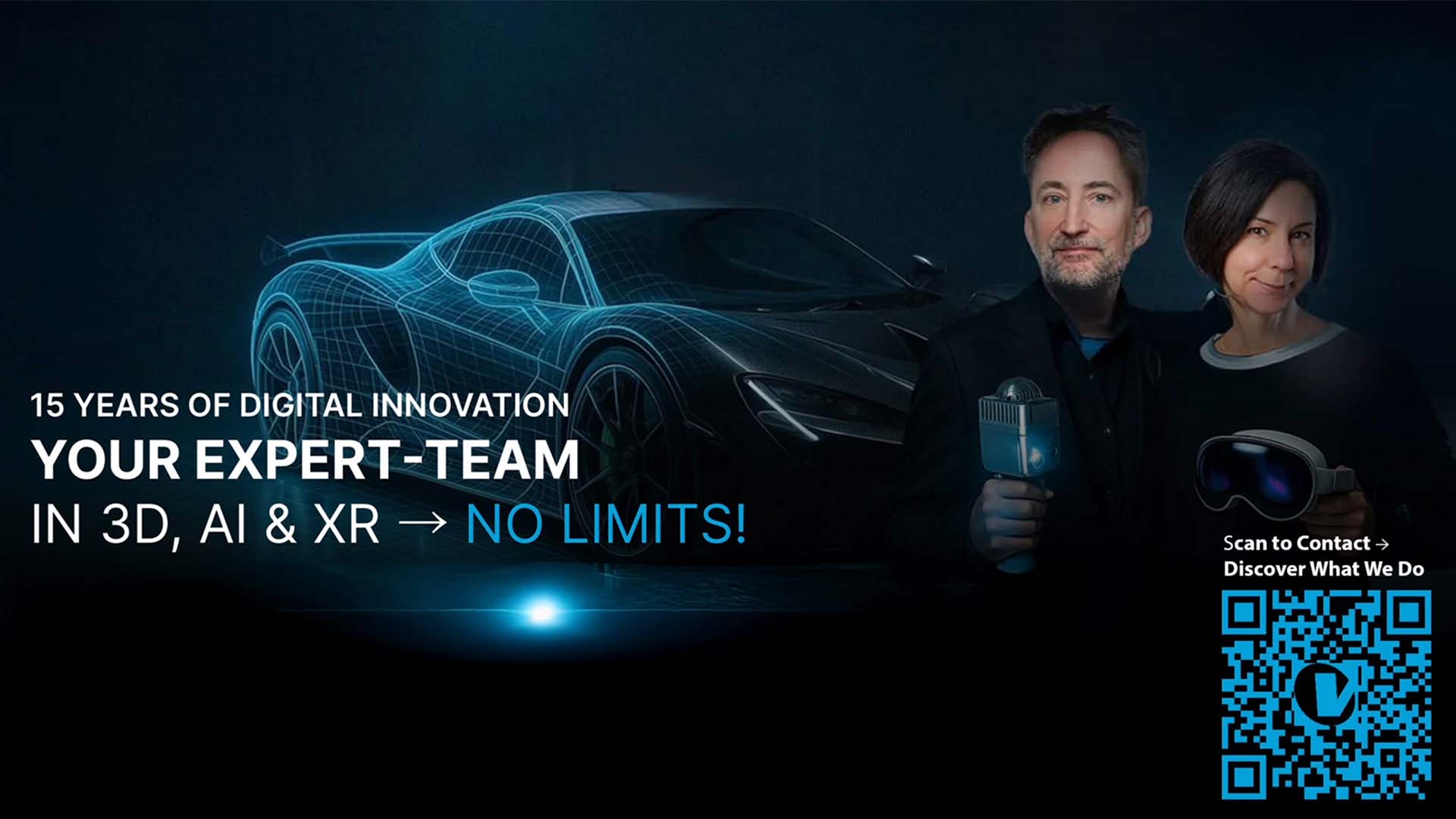Image: Perceptive AI systems are transforming the industrial production landscape | Source: Visoric Research / Ulrich Buckenlei
When machines begin to see, hear, and interpret, the role of artificial intelligence shifts from generation to perception. While generative AI creates content, perceptive AI understands its environment. It observes, reacts, and anticipates. This transition represents more than just a technological leap – it marks the beginning of a new era of digital sensitivity, where systems learn to comprehend reality as a whole.
In factories, cities, and interactive spaces, this redefines the meaning of intelligence. It becomes experiential rather than merely computational. Where data models once made decisions, sensory systems now detect relationships: movement, temperature, sound, and material behavior. Perceptive AI interprets signals in real time and translates them into action – from adaptive production control to autonomous spatial orchestration. Artificial perception makes technology more human by beginning to understand context.
The Evolution from Generative to Perceptive AI
The transition from generation to perception changes how systems think. Generative models are creative yet blind; they produce images, text, and shapes without connection to the physical world. Perceptive AI, however, is anchored in the present. It perceives before it acts and highlights the difference between interpretation and intuition. A new form of machine empathy emerges – an interplay of sensors, spatial awareness, and semantic intelligence.
- Generative AI creates – Perceptive AI comprehends
- Real-time sensing replaces purely data-driven models
- Machines begin to recognize context and meaning
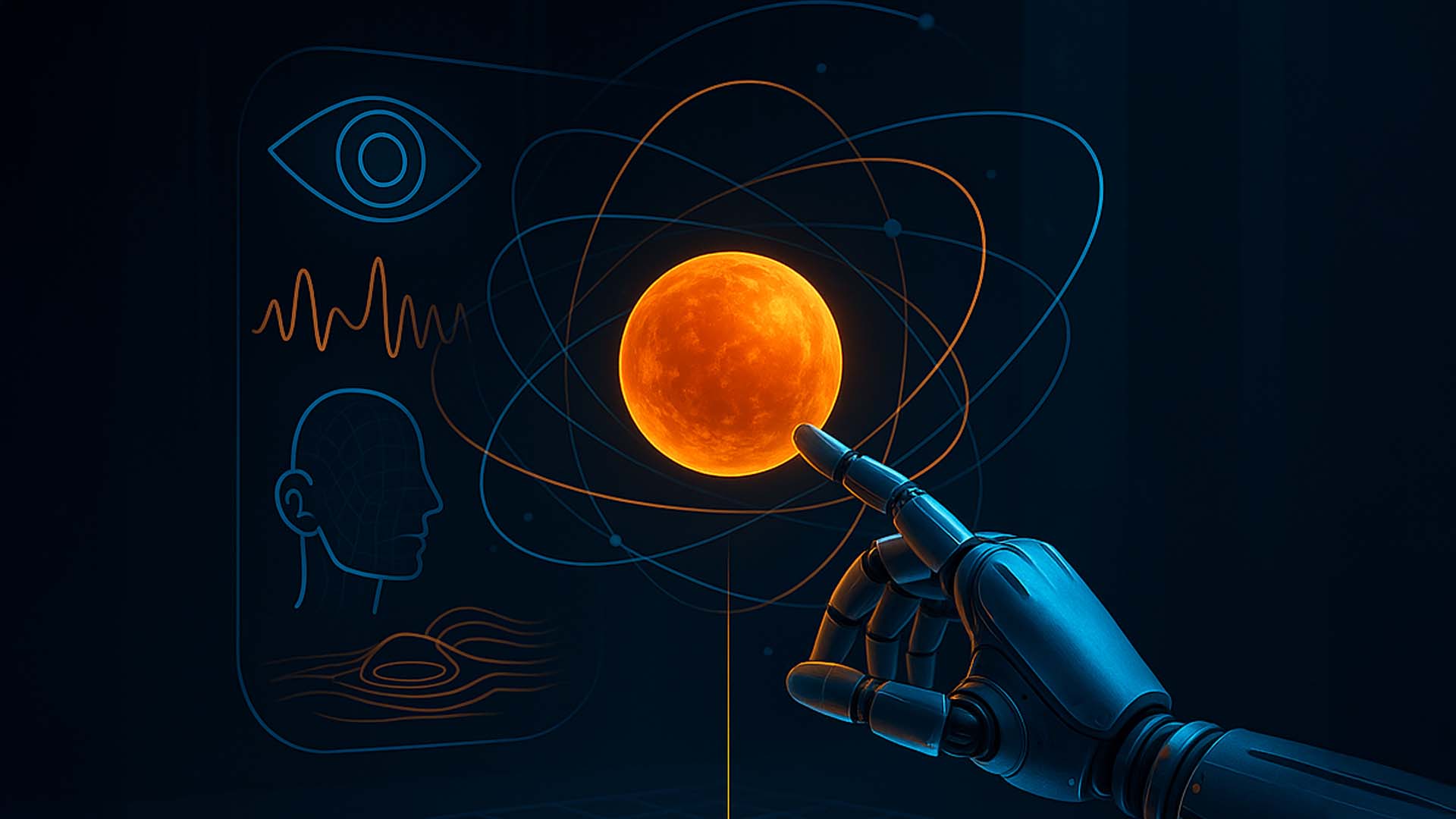
Image: Perceptive AI analyzing multisensory input in real time | Visualization: Visoric GmbH 2025
This new generation of AI fundamentally changes human-machine interaction. Systems no longer just respond to input; they read situations – like a person perceiving mood, movement, and intent. A new dimension of collaboration arises: machines act more intuitively, processes adapt dynamically, and decisions flow naturally. What once seemed like science fiction is becoming reality in design, industry, and architecture.
Behind this evolution lies a simple principle: seeing replaces calculating. Where data was abstract, perception becomes concrete. With Perceptive AI, digital intelligence merges with the physical world, opening a new chapter in which machines learn to sense without becoming human.
Industrial Relevance: From Data to Decision
In industrial contexts, Perceptive AI bridges the gap between observation and action. While traditional automation reacts to rules, perceptive systems act in real time. They recognize connections between light, material, sound, and motion, instantly adapting accordingly. Factories evolve into living organisms that self-adjust and navigate their environment.
Cameras, acoustic sensors, and depth scanners provide data streams that are no longer merely measured but understood. Instead of isolated values, situational awareness emerges, making production lines more resilient. Errors are detected before they occur, maintenance cycles are optimized, and energy flows are managed intelligently. Perceptive AI shifts focus from control to resonance – processes become dialogues between machine, human, and environment.
- Perceptive AI analyzes multisensory signals in real time
- Production becomes adaptive and predictive
- Human and machine interact through perception, not command
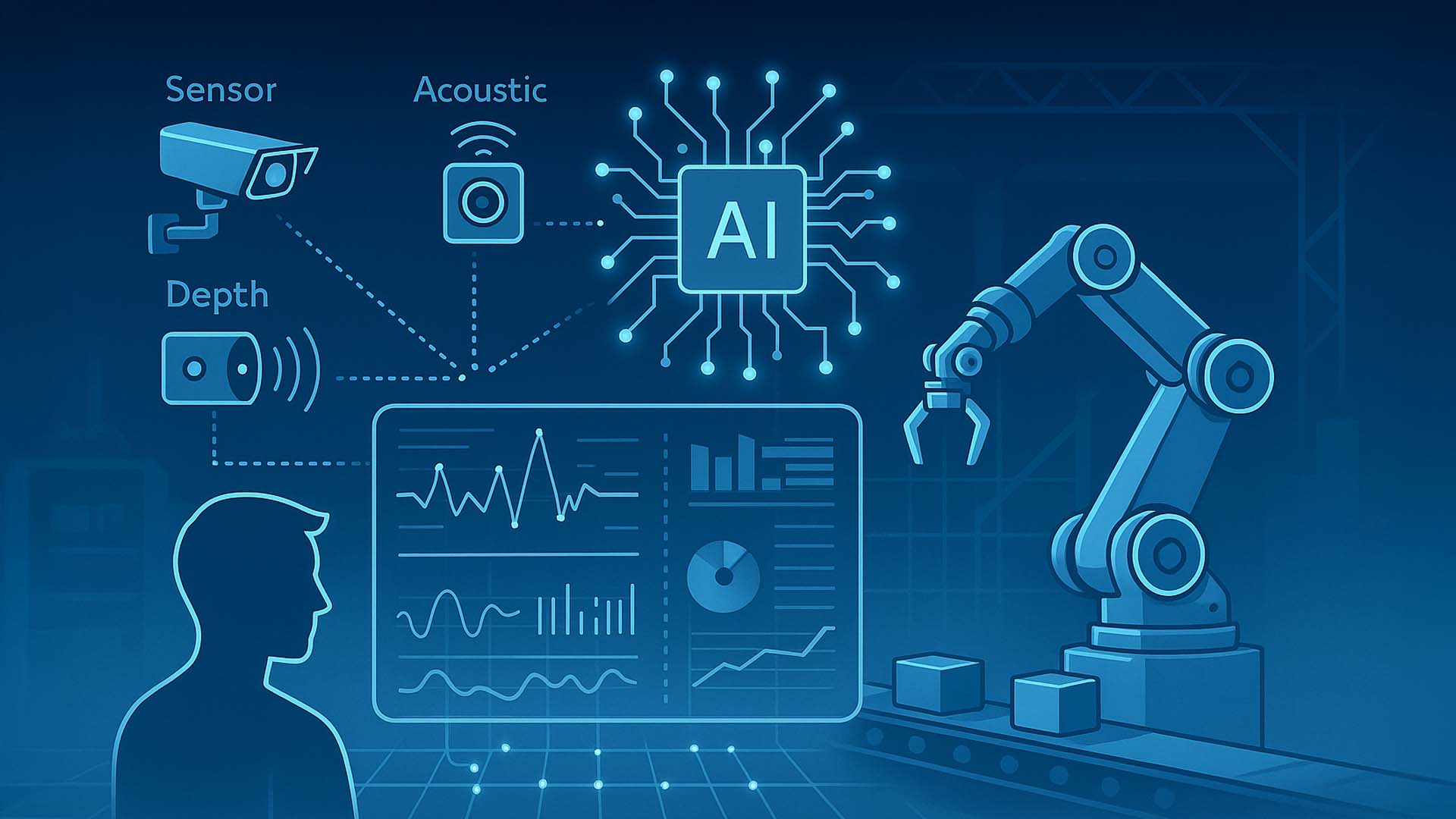
Image: Perceptive AI connecting sensors to cognitive control | Visualization: Visoric GmbH 2025
Industry is evolving from data-driven to perceptive systems. Production lines respond to vibrations, reflections, and temperature. Robots interpret human intent and adjust dynamically. The digital twin of production is no longer only calculated but sensed. This creates a new generation of digital twins that remain continuously synchronized with physical reality.
The result is a new form of industrial intelligence – one that does not just think but experiences. Perceptive AI transforms data into experience, control into understanding, and automation into communication. It marks the moment when technology stops reacting and starts understanding.
From Observation to Participation: Rethinking Human Interaction
A central distinction of Perceptive AI lies in the role of humans. They are no longer external controllers but integral parts of a sensitive system that responds to movement, voice, gesture, and rhythm. Where previous interfaces queried data, communication now emerges – intuitive, fluid, and multisensory. Humans become co-participants in a cognitive space where technology listens, observes, and reasons.
In manufacturing, design, or spatial communication, this transforms the entire interaction process. Engineers, artists, and visitors experience systems that respond not through buttons but through resonance. Light intensity, color temperature, or mechanical motion adapt to emotion, volume, or distance. Every action, every sound produces a visible response. Technology loses rigidity and gains emotional dimension.
- Perceptive AI turns interfaces into dialog systems
- Interaction arises from movement, sound, and gaze
- Human and machine share the same perceptual space
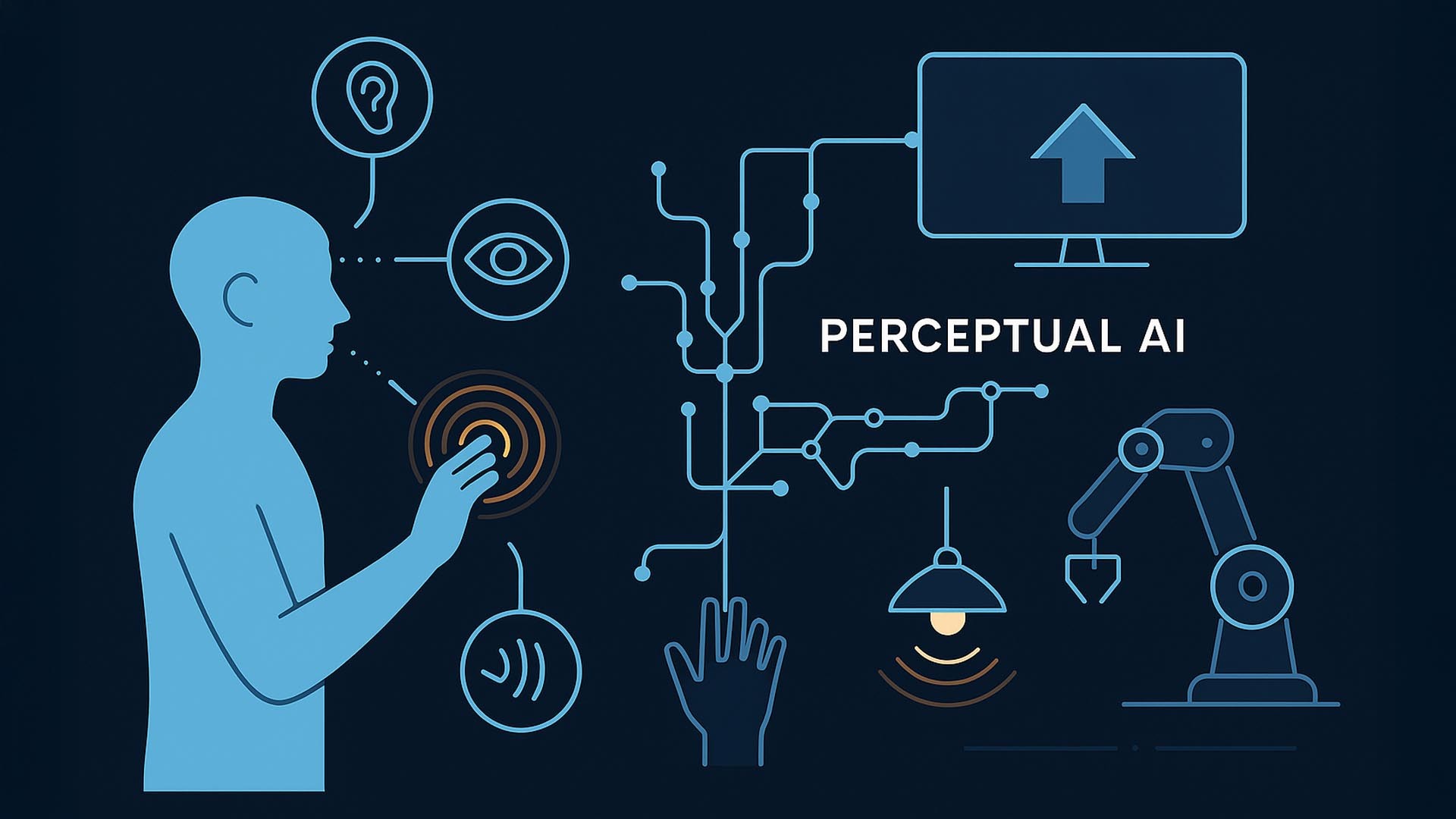
Image: Human motion as a control impulse for perceptive AI systems | Visualization: Visoric GmbH 2025
Here lies the true potential of this technology: it shifts focus from algorithm to experience. When people interact with their environment in real time, a connection emerges that is both rational and emotional. The interplay between perception and response creates trust – forming the basis for productive collaboration between humans and machines.
Perceptive AI redefines not only efficiency but empathy. Systems understand without overwhelming. They respond without judging. In this balance, a new culture of interaction arises – spanning industry, art, and architecture. Technology is no longer seen as a tool but as a counterpart that shares the world with us.
Future Potential: From Innovation to Integration
What begins today as a technical experiment will soon become part of industrial and societal infrastructure. Perceptive AI has the potential to orchestrate processes, shape spaces, and intensify communication – everywhere perception extends beyond information. In industry: adaptive production lines that learn from experience. In architecture and design: spaces that respond to humans. In brand environments: experiences that evolve in real time.
The fusion of physical space and digital perception opens entirely new fields of application. Real-time systems detect patterns in noise, motion, or temperature and visualize them in meaningful ways. Factories become learning ecosystems, exhibitions become reactive narratives, buildings become dialog entities. Perception replaces control, intuition replaces command structures – and data becomes relationship.
- Perceptive AI integrates physical, digital, and emotional layers
- Spaces and systems learn to respond in real time
- New forms of interaction emerge across industry, design, and communication
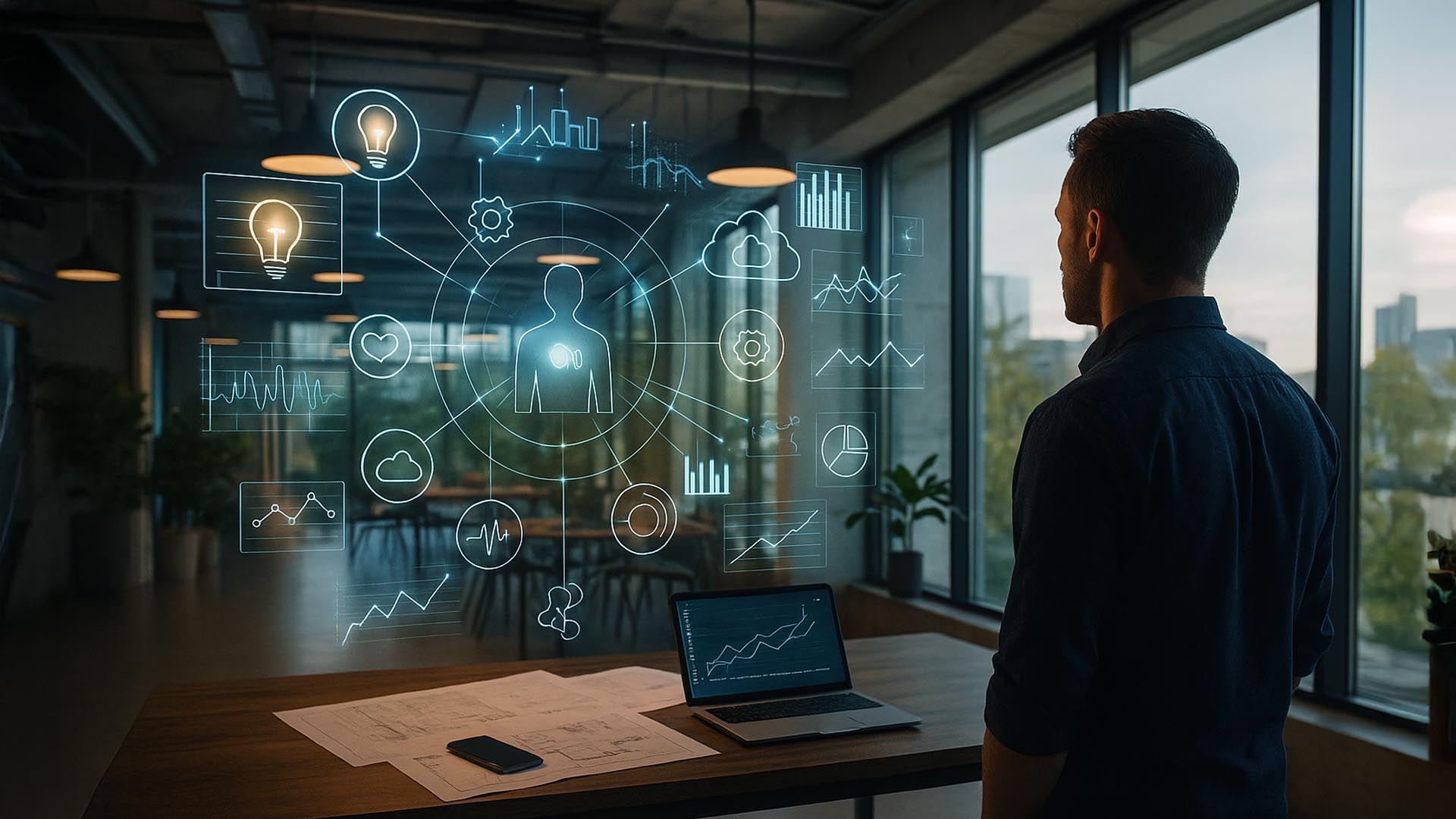
Image: Future scenario of connected perception systems | Visualization: Visoric GmbH 2025
This fusion of perception, context, and decision-making is more than a trend – it is the next step in the evolution of artificial intelligence. While generative systems create digital representations, Perceptive AI enables direct connection between intelligence and environment. Data flows become action, light becomes information, sound becomes control.
In the long term, this creates a paradigm that views technology as a partner. Machines are not replaced but embedded. Decisions are not dictated but felt. Visoric is working to translate these principles into scalable formats – from real-time architectures to industrial ecosystems that perceive, think, and create.
Perceptive AI in Action
The video demonstrates how perception, space, and interaction merge in real time. With Perceptive AI, environments are no longer programmed but experienced. Every step, movement, and sound changes the digital layer – precisely captured by sensors, real-time 3D, and neural models that interpret behavioral patterns and visualize them.
Demonstration of a New Approach to Perceptual AI:
Source: Wiedemer, J., Jaini, V. & Geirhos, R. et al. (2025). Veo 3: Towards Perceptual AI through Video-Based Physical Reasoning.
Video analysis by Dr. Károly Zsolnai-Fehér / Two Minute Papers (YouTube).
The scenes illustrate how digital experiences become living systems. Spaces respond to movement, light changes dynamically with environmental rhythm, and audiovisual elements emerge from user interaction. Urban spaces, labs, and studios transform into adaptive experience zones that react instantly to human presence.
The value lies not only in visual impact but in emotional connection. When technology listens to humans, it becomes a medium for empathy and expression. Perceptive AI makes this scalable – in education, industry, architecture, and brand communication. Every project becomes a living system that doesn’t just display but responds.
Visoric has been exploring the intersection of spatial perception, AI, and real-time visualization for years. The goal is to dissolve the boundary between simulation and real experience. Technology becomes invisible, the experience remains – intuitive, sensory, and intelligent.
From Vision to Implementation
To turn an idea into an experience, story, technology, and spatial design must work seamlessly together. The process spans from creative concept to data integration and real-time control. Only when all levels are synchronized does an immersive experience emerge – visually, technically, and emotionally.
- Concept and story design based on human perception
- Implementation using real-time 3D, sensors, and AI models
- Integration into physical, virtual, and hybrid spaces
Image: Over 15 years of digital innovation – the Munich expert team for 3D, AI, and XR, where innovation knows no limits | Visualization: Visoric GmbH 2025
Source: Visoric Development Lab | Photo & Text: Ulrich Buckenlei
In practice, the quality of an immersive system lies in the details. Every camera angle, light source, and millisecond of synchronization shapes the experience. Only when technical engineering and aesthetic design speak the same language does what Visoric calls “perceptual continuity” emerge – the seamless integration of real perception and digital intelligence.
Such projects demand interdisciplinary thinking. Designers, developers, and engineers work together on systems that treat perception as data. The result: new standards for architecture, education, industry, and entertainment – systems that are not just operated but experienced. Visoric supports this transformation as a partner for companies shaping the next stage of digital evolution.
Work with Leading Minds in AI and XR Innovation
Would you like to explore the possibilities of Perceptive AI, real-time 3D, or immersive systems for your organization? Talk to the Munich VISORIC expert team. Together we develop projects that unite technology, design, and emotion – creating spaces that think, react, and inspire.
- Consulting, strategy, and prototyping
- Integration of AI, XR, and real-time data into your environment
- Long-term support, scaling, and technical development
Now is the time to understand perception as the new interface between humans and machines.
We look forward to your ideas and to shaping the next evolution of digital interaction together.
Contact Persons:
Ulrich Buckenlei (Creative Director)
Mobile: +49 152 53532871
Email: ulrich.buckenlei@visoric.com
Nataliya Daniltseva (Project Manager)
Mobile: +49 176 72805705
Email: nataliya.daniltseva@visoric.com
Address:
VISORIC GmbH
Bayerstraße 13
D-80335 Munich



